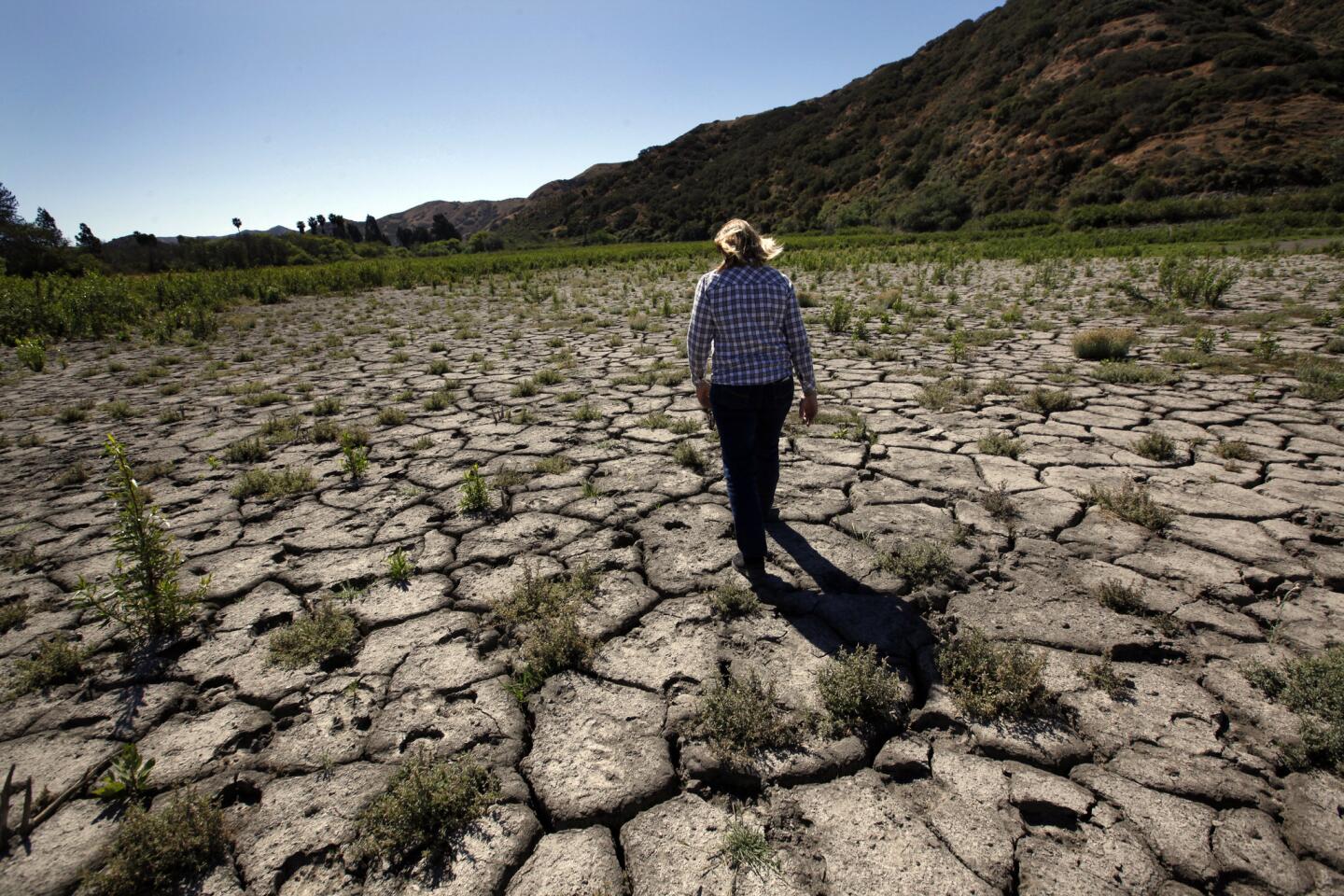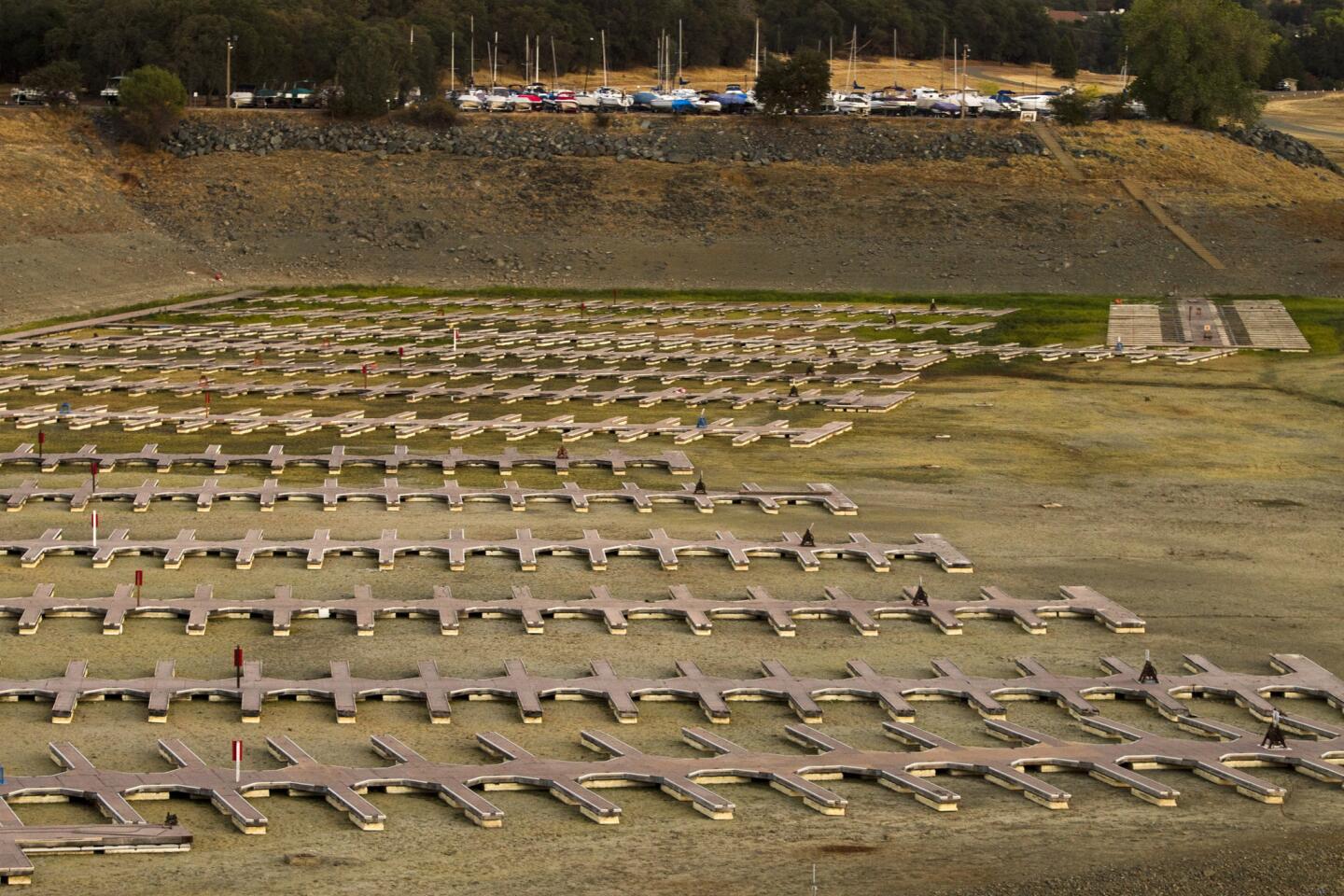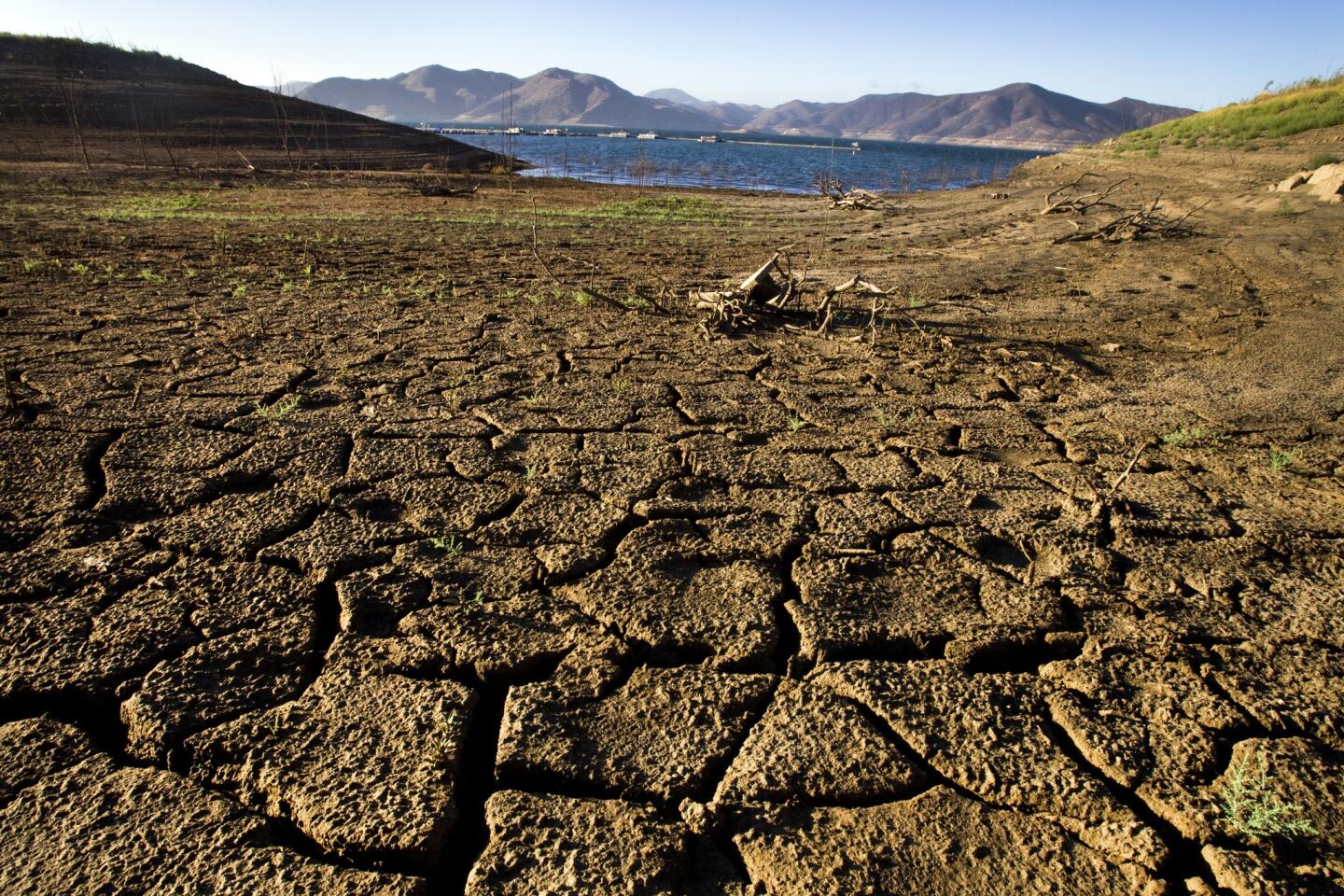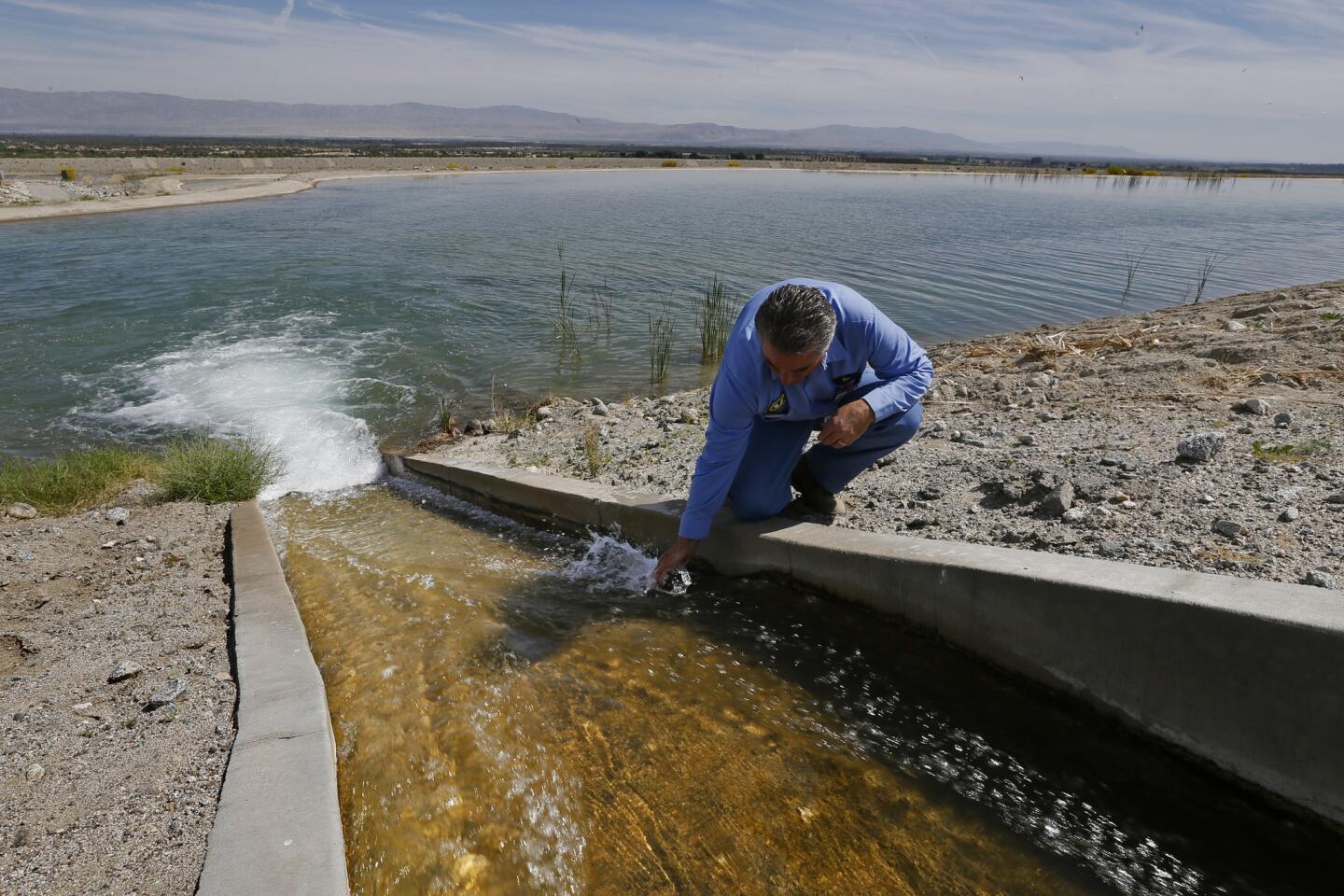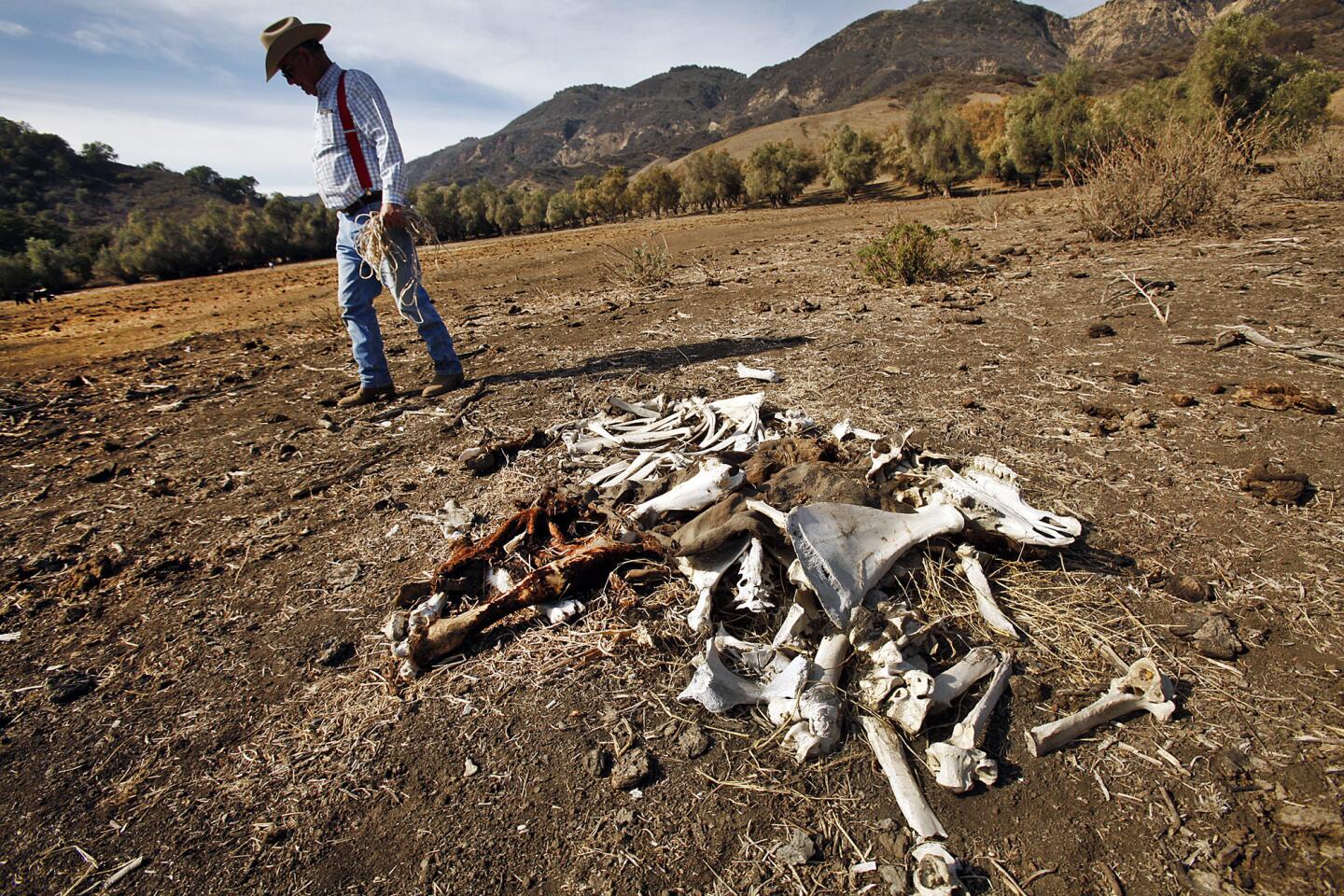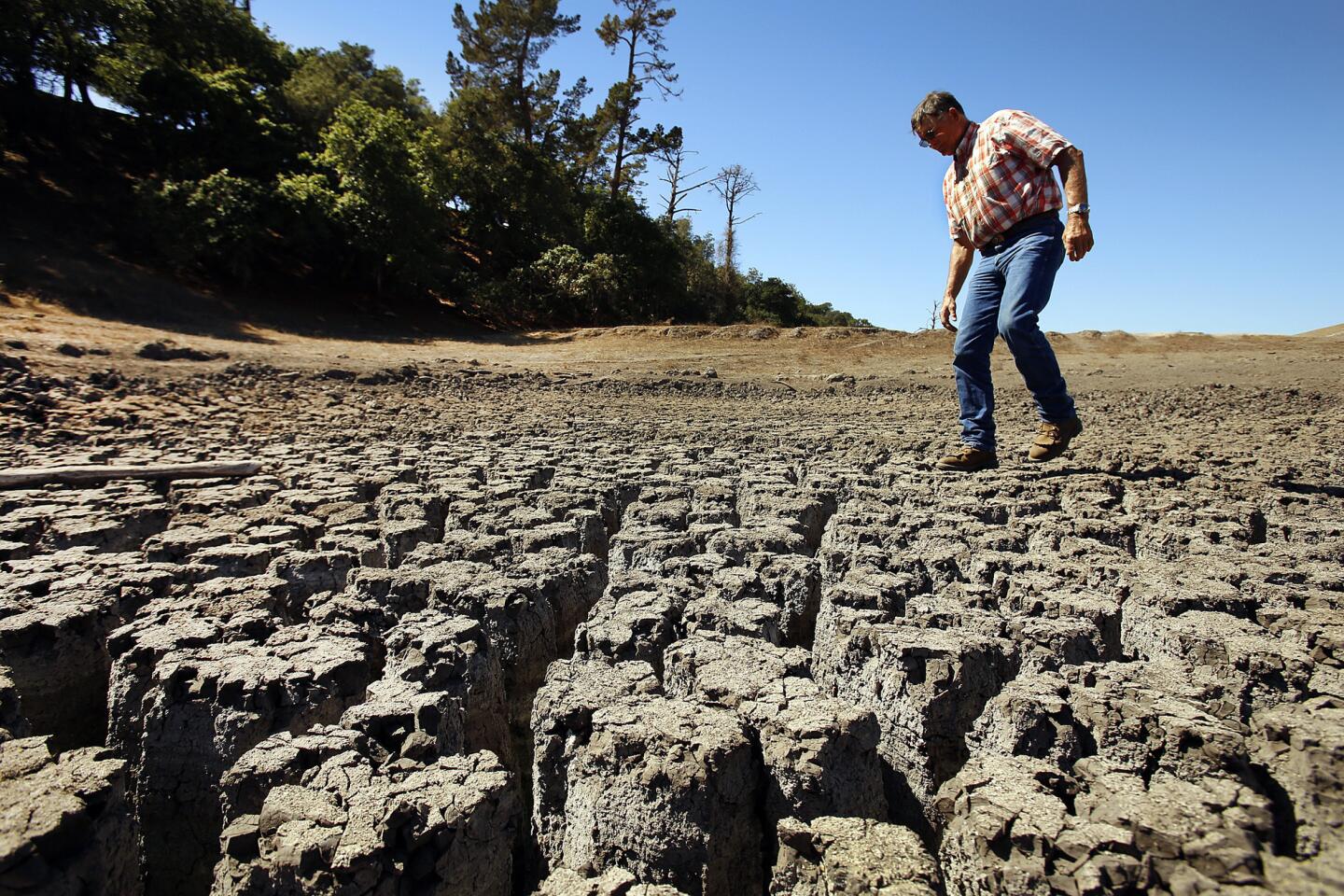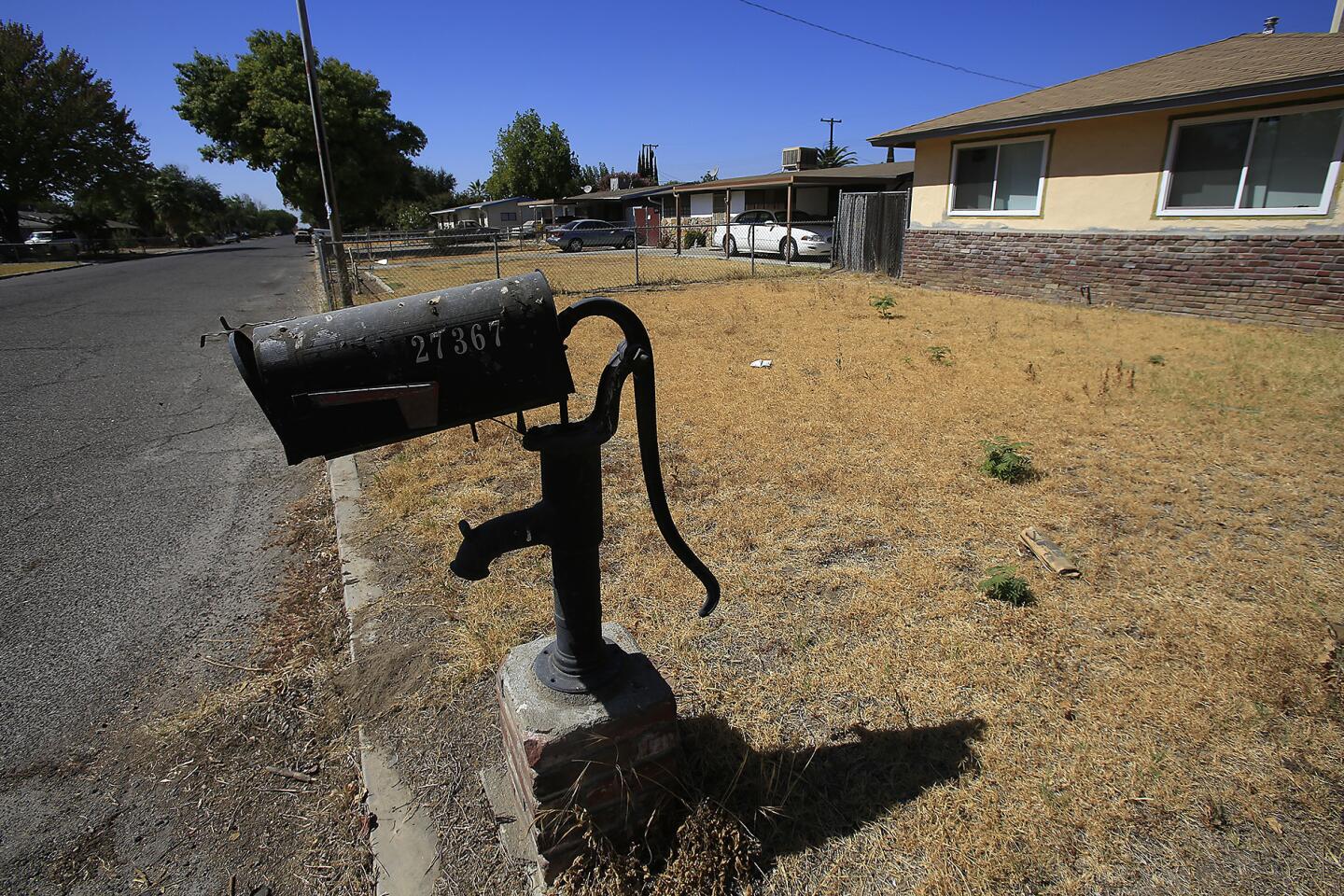Water rationing cut of 15% in SoCal could bring higher bills
Southern California’s water wholesaler Tuesday is poised to impose a 15% cut in water deliveries to local cities and water districts, a move that would bolster Gov. Jerry Brown’s aggressive statewide conservation effort in the fourth year of withering drought.
A committee of the Metropolitan Water District of Southern California recommended the reduction Monday, which would come with penalties that would significantly increase water costs for agencies that demand more deliveries than they are allocated. The full MWD board is expected to approve the plan Tuesday.
The MWD customarily provides about half the Southland’s water supplies, and this would mark only the fourth time it has cut wholesale supplies for its 26 member agencies.
Some committee members pushed for a deeper cut of 20% to preserve Metropolitan’s dwindling reserves. But they lost to a majority who argued that it would be difficult enough for cities and local water districts to cope with a 15% loss of MWD supplies.
“Representing L.A., I don’t think we could hit [20%], and we’d get fined,” said board member Paul Koretz, a city councilman from Los Angeles, where residents have already reduced usage by 10% in recent years.
But Keith Lewinger, a board member from the San Diego County Water Authority, said the staff was making risky assumptions about MWD’s ability to supplement its water supply this year.
Without a 20% reduction, he said, “I’m concerned we’re going to deplete our savings account to a dangerous level.”
The move comes as one of the most severe droughts in modern California history persists. Irrigation deliveries have been slashed and farmers expect to idle more than 500,000 acres of cropland this year. Groundwater levels in some parts of the San Joaquin Valley have sunk to record lows as growers drill more and deeper wells. Some small communities dependent on local sources have run out of water.
Although major reservoirs in Northern California hold more water than they did a year ago, the Sierra Nevada snowpack that normally provides the state with about a third of its water supply hit a record low for April 1.
Metropolitan, which has a 37-member board, sells water imported from Northern California and the Colorado River to cities and regional agencies that in turn supply hundreds of local districts that provide water to residential and commercial customers.
The MWD reductions will take the form of allocations. Member agencies that need more than their allotment will have to pay punitive surcharges that would make the additional water as much as four times more expensive than the base cost.
Although the rationing is intended to reduce MWD deliveries by 15% overall, that will not translate into the same level of cutbacks for each district. Rather, individual allocations will be made according to a complicated formula.
A 15% drop in deliveries would conserve about 300,000 acre-feet of water, slowing the drawdown of Metropolitan’s dwindling reserves. One acre-foot of water is nearly 326,000 gallons, or enough to supply two households for one year.
MWD began the drought in 2012 with record amounts of water stored in groundwater banks and regional reservoirs. By July 1, when the reductions would take effect, staff projects those reserves will have fallen from 2.7 million acre-feet to slightly more than 1 million acre-feet.
Despite members who advocated a steeper cutback, others on the Water Planning and Stewardship Committee said 15% was a good balance. “If we take too much too fast … it can have a brutal impact,” said Larry Dick of the Municipal Water District of Orange County.
Metropolitan was preparing a rationing program well before Brown issued a historic executive order April 1 that requires Californians to chop urban water use 25% compared with 2013 levels.
Jeffrey Kightlinger, MWD’s general manager, said the allocation plan complements Brown’s action, which will have a more direct effect on local agencies. The MWD cuts will give local districts more ammunition to reduce demand so they avoid the penalty surcharges.
Metropolitan has trimmed deliveries several times in previous droughts — 10% in 1977, 17% in 1991 and 10% in 2009-2010. In each instance, MWD’s member agencies have reined in use enough to avoid financial penalties.
But officials predict it will be tougher this time to attain the necessary water savings to avoid surcharges, given that many Southland cities have significantly reduced their use in recent years.
“It’s going to be a real challenge,” said board member Don Calkins of Anaheim.
In addition to reserves, Metropolitan is expecting full deliveries from the Colorado River this year and will get 20% of its requested amounts from the State Water Project, compared with 5% last year. The agency also is ramping up a long-term program under which growers in the Palo Verde Irrigation District in southeast California idle land and sell the conserved water to Metropolitan.
But Metropolitan’s plans to buy as much as 100,000 acre-feet of water from Northern California farmers have been frustrated by a lack of sellers, forcing MWD to shop for supplies in the Colorado River basin.
Although Kightlinger said he thought a 15% delivery reduction would be adequate, the staff will review water demand and supply every month. If conditions worsen, the board could make additional cuts.
Saying the public doesn’t appreciate the severity of Brown’s order, some board members called for Metropolitan to step up public outreach.
“People don’t understand what they’re going to have to do in the future,” said Russell Lefevre of Torrance.
bettina.boxall@latimes.com
Twitter: @boxall
More to Read
Start your day right
Sign up for Essential California for news, features and recommendations from the L.A. Times and beyond in your inbox six days a week.
You may occasionally receive promotional content from the Los Angeles Times.






